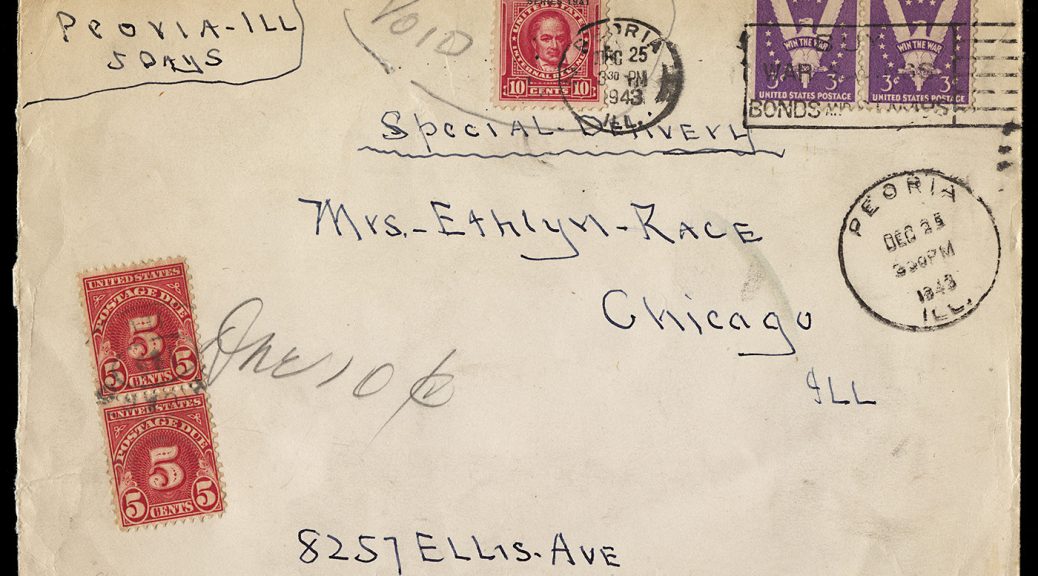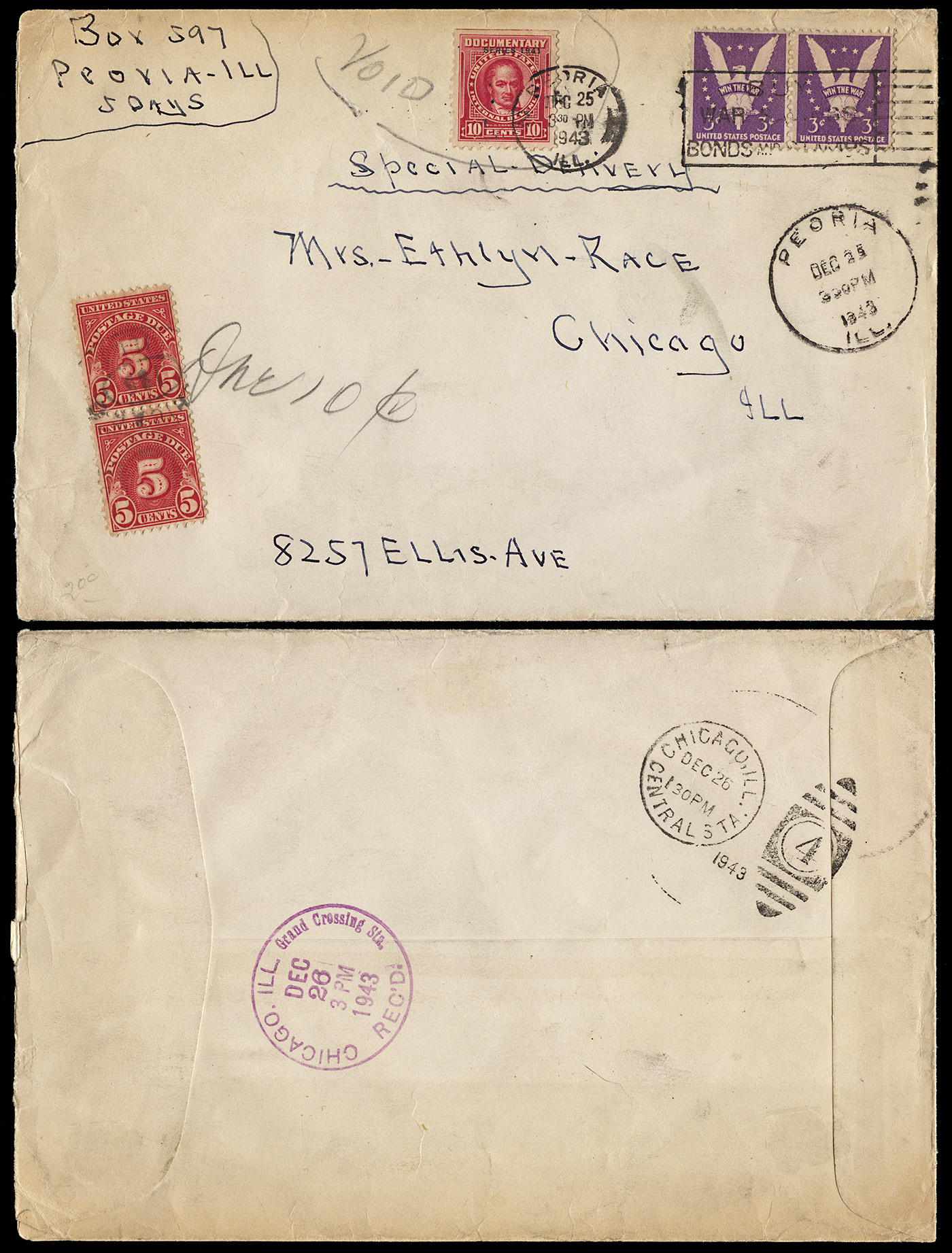
Lovely 1943 Illegal / Improper Revenue Use Cover
One of my main collecting specializations is illegal/improper cross-usages:
- U.S. postage stamps used as revenues on documents
- U.S. revenue stamps used as postage on cover
- Non-documentary revenues used as documentaries on documents
Unlike the case with other countries, cross usage of these stamps was technically illegal in the U.S., so these usages are not common and are highly sought after. It is the exact opposite of stamps of the British Commonwealth, for example, where revenue cancels and usages are NOT desirable and only worth a tiny fraction (5-10%) of their postally used counterparts.
For the purposes of this item, we’re just talking about category #2 above: revenue stamps used as postage on cover. I break them down into 4 separate periods, ordered from most common to least common (in my experience):
- The Spanish-American War period (1898-1902). The majority of revenue stamps used as postage I run across are from this period. The end date is somewhat indistinct; some might extend this as far as 1904.
- Early 20th Century (1902-1930). Most of the examples I see are from the period 1915-1925.
- Civil War era (1862-1875). The majority of examples I have seen are from the years 1866-1870.
- Mid-20th century (1931-1967). Illegal use covers form this period are quite scarce, particularly those that are in-period usages of the stamps and not overtly philatelic. I have only seen a handful.
So the cover I just acquired is quite lovely IMO. It is Scott #R317 (1941 Overprint) used on an oversized 1943 special delivery cover, caught and held, marked 10 cents postage due, with a vertical pair of 5-cent postage due stamps affixed. As an added bonus, it has a Christmas Day postmark date. I consider this to be an in-period usage.
There is nothing that overtly jumps out to me as being philatelic/contrived. Quite scarce, in my opinion.
From Bart Rosenberg:
Interesting, but it raises some questions. Why would the sender even have a documentary red unless they were in a business that needed them? Why would anyone in a business that needed them not be likely know that such a usage was not allowed? One would have to expect that special delivery was not a new concept to them. Also it is just a PO Box return address (conveniently keeping a name off). It was probably a Christmas card, and I do suspect a philatelic usage; why would a non-collector bother to save it?
My reply:
“I’ll take questions we’ll never know the answers to for $500, Alex.”
Same could be said of any illegal use cover from any period that isn’t commercially identified on the exterior.
From Ron Lesher:
We should add that Series 1941 documentary stamps were devalued at the end of 1942, so the stamp at the time of the mailing of this letter was valueless!
My reply:
Ron, was that a generally accepted standard, that the revenue stamps were only valid through the end of the calendar year following the one printed on the stamp?
Ron’s Reply:
Dan, that practice was initiated with the tobacco taxpaids in 1932 (Series 102). Beginning with 1940 that same practice was adopted for documentary, stock transfer, and silver tax. The reason for the two-year validity period was that documents were to be retained for three years and so the stamps could not be soaked off after three years and reused.
To the best of my knowledge that practice continued with the documentary and stock transfer stamps with quite a bit of vigilance, but not so much vigilance with the silver tax stamps.
Bart, the documentary stamps were readily available at all first class post offices, so the documentary stamps could easily be purchased.
I might add that I purchased a number of sheets of documentary stamps in the early 1960’s during my college years.
